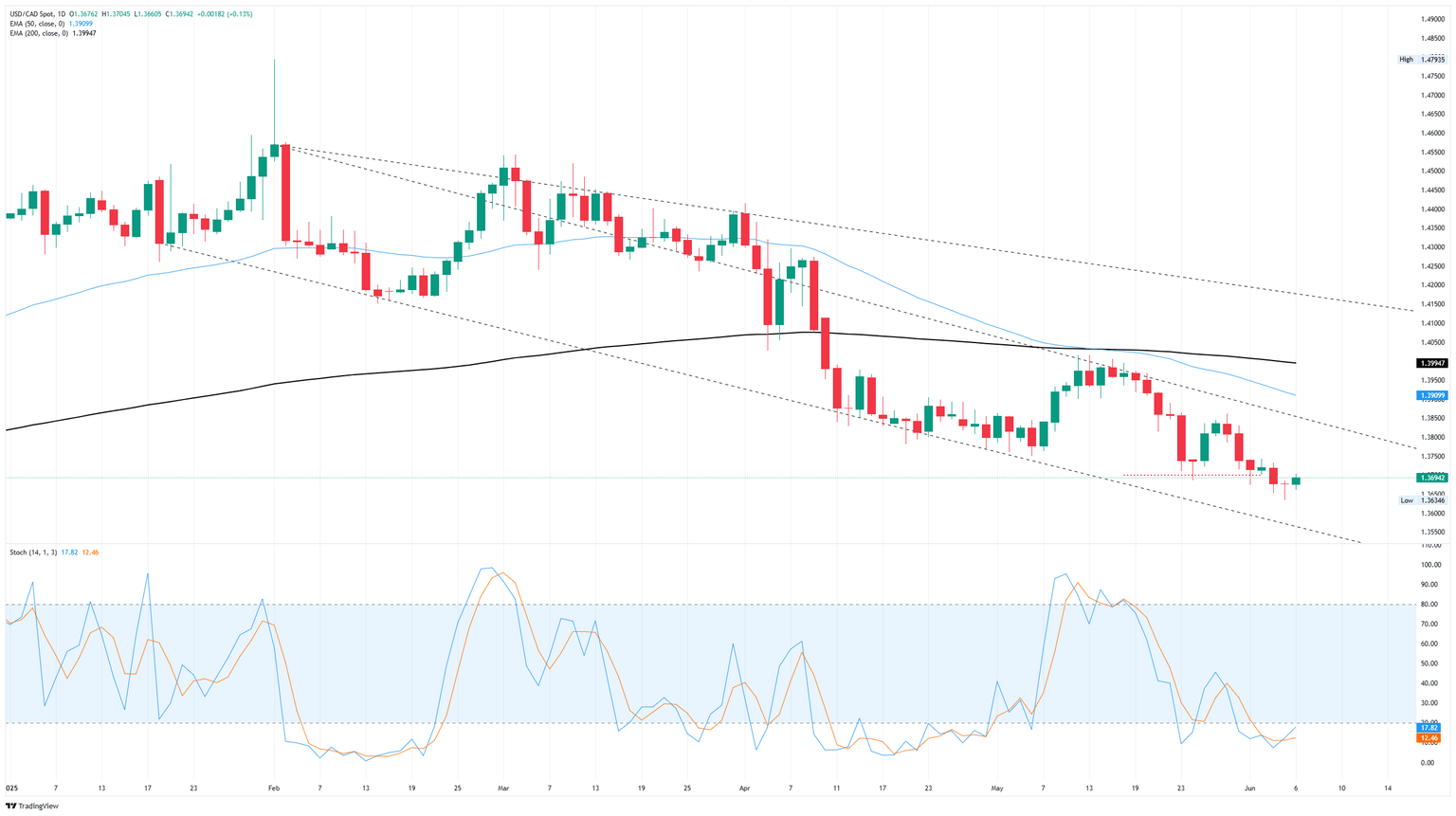Canadian Dollar gives back gains despite upbeat jobs data
- The Canadian Dollar firmed up on Friday, but Greenback flows rallied harder, driving a rebound in USD/CAD.
- US NFP net job gains came in stronger than expected, overshadowing Canadian job numbers.
- Key post-tariff US CPI inflation figures loom large next week; Canadian data docket runs out of gas.

The Canadian Dollar (CAD) saw firm gains in employment figures on Friday, with an overall net increase in Canadian employment thumping median market forecasts for a contraction. However, a stronger-than-expected US Nonfarm Payrolls (NFP) print eclipsed Canadian economic data, giving the US Dollar (USD) a much-needed rebound.
The Canadian economic data docket is slim next week, leaving Loonie markets exposed to Greenback flows. The US’s first inflation print that will include preliminary price volatility impacts from the Trump administration’s whipsaw “reciprocal” tariff package announced in early April is slated to be released next Wednesday. Investors will likely grow apprehensive ahead of the data print, which is expected to show an overall increase in price pressures.
Daily digest market movers: Canadian Dollar gains overshadowed by post-NFP market reaction
- The Canadian Dollar pared recent gains against the US Dollar, falling around one-sixth of one percent and pushing USD/CAD back up to the 1.3700 region.
- Canada added 8.8K net new jobs in May, well above the expected 15K contraction.
- The US also added 139K new payroll positions over the same period, falling slightly from April’s revised 147K but holding well above the expected 130K.
- A broad miss by investors to forecast this Friday’s labor prints on both sides of the US-Canada border reveals the struggle of analysts to accurately calculate the economic impacts of the US’s whiplash trade policies.
- Canada remains largely absent from next week’s economic data docket. However, key US CPI inflation data is due next Wednesday. US CPI is expected to tick up across the board as April’s opening trade tariff volley by the Trump administration is expected to start appearing in broad economic datasets.
Canadian Dollar price forecast
The Canadian Dollar remains in a firmly bullish stance against the US Dollar, but Loonie bidders are having an increasingly difficult time muscling USD/CAD underneath the 1.3700 handle in the near term. Momentum still holds in favor of the Loonie, with the pair trapped in a rough downtrend from the year’s early multi-year peaks near 1.4800.
USD/CAD daily chart

Canadian Dollar FAQs
The key factors driving the Canadian Dollar (CAD) are the level of interest rates set by the Bank of Canada (BoC), the price of Oil, Canada’s largest export, the health of its economy, inflation and the Trade Balance, which is the difference between the value of Canada’s exports versus its imports. Other factors include market sentiment – whether investors are taking on more risky assets (risk-on) or seeking safe-havens (risk-off) – with risk-on being CAD-positive. As its largest trading partner, the health of the US economy is also a key factor influencing the Canadian Dollar.
The Bank of Canada (BoC) has a significant influence on the Canadian Dollar by setting the level of interest rates that banks can lend to one another. This influences the level of interest rates for everyone. The main goal of the BoC is to maintain inflation at 1-3% by adjusting interest rates up or down. Relatively higher interest rates tend to be positive for the CAD. The Bank of Canada can also use quantitative easing and tightening to influence credit conditions, with the former CAD-negative and the latter CAD-positive.
The price of Oil is a key factor impacting the value of the Canadian Dollar. Petroleum is Canada’s biggest export, so Oil price tends to have an immediate impact on the CAD value. Generally, if Oil price rises CAD also goes up, as aggregate demand for the currency increases. The opposite is the case if the price of Oil falls. Higher Oil prices also tend to result in a greater likelihood of a positive Trade Balance, which is also supportive of the CAD.
While inflation had always traditionally been thought of as a negative factor for a currency since it lowers the value of money, the opposite has actually been the case in modern times with the relaxation of cross-border capital controls. Higher inflation tends to lead central banks to put up interest rates which attracts more capital inflows from global investors seeking a lucrative place to keep their money. This increases demand for the local currency, which in Canada’s case is the Canadian Dollar.
Macroeconomic data releases gauge the health of the economy and can have an impact on the Canadian Dollar. Indicators such as GDP, Manufacturing and Services PMIs, employment, and consumer sentiment surveys can all influence the direction of the CAD. A strong economy is good for the Canadian Dollar. Not only does it attract more foreign investment but it may encourage the Bank of Canada to put up interest rates, leading to a stronger currency. If economic data is weak, however, the CAD is likely to fall.
Author

Joshua Gibson
FXStreet
Joshua joins the FXStreet team as an Economics and Finance double major from Vancouver Island University with twelve years' experience as an independent trader focusing on technical analysis.

















